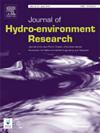A statistical approach to multisite downscaling of daily extreme temperature series: A case study using data in Bangladesh
Abstract
Downscaling techniques are required to describe the linkages between Global Climate Model outputs at coarse-grid resolutions to surface hydrologic variables at relevant finer scales for climate change impact and adaptation studies. In particular, several statistical methods have been proposed in many previous studies for downscaling of extreme temperature series for a single local site without taking into account the observed spatial dependence of these series between different locations. The present study proposes therefore an improved statistical approach to downscaling of daily maximum (Tmax) and minimum (Tmin) temperature series located at many different sites concurrently. This new multisite multivariate statistical downscaling (MMSD) method was based on a combination of the modeling of the linkages between local daily temperature extremes and global climate predictors by a multiple linear regression model; and the modeling of its stochastic components by the combined singular value decomposition and multivariate autoregressive (SVD-MAR) model to represent more effectively and more accurately the space-time variabilities of these extreme daily temperature series. Results of an illustrative application using daily extreme temperature data from a network of four weather stations in Bangladesh and two different NCEP/NCAR reanalysis datasets have indicated the effectiveness and accuracy of the proposed approach. In particular, this new approach was found to be able to reproduce accurately the basic statistical properties of the Tmax and Tmin at a single site as well as the spatial variability of temperature extremes between different locations. In addition, it has been demonstrated that the proposed method can produce better results than those given by the widely-used single-site downscaling SDSM procedure, especially in preserving the observed inter-site correlations.

 求助内容:
求助内容: 应助结果提醒方式:
应助结果提醒方式:


